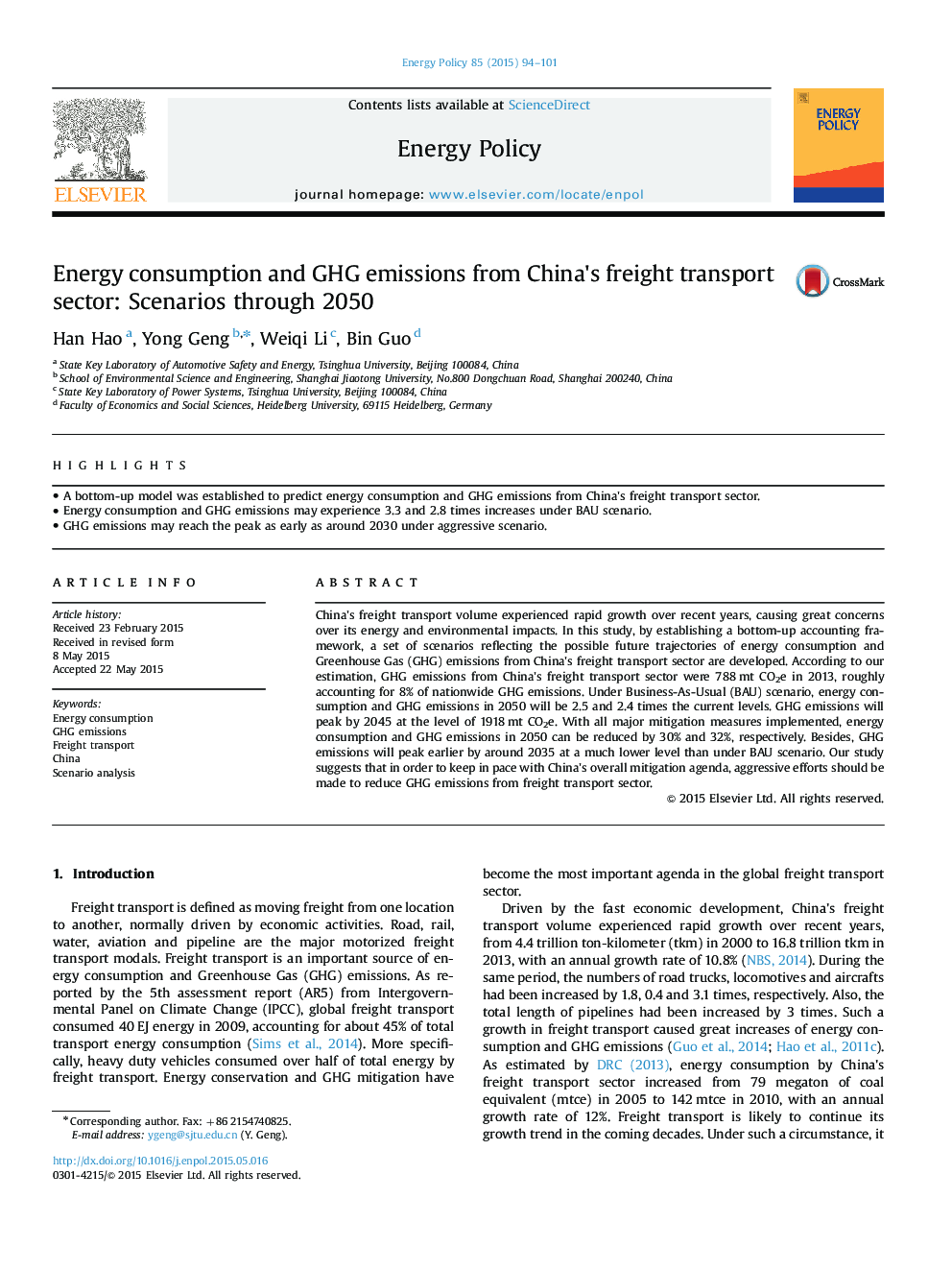| Article ID | Journal | Published Year | Pages | File Type |
|---|---|---|---|---|
| 7400387 | Energy Policy | 2015 | 8 Pages |
Abstract
China's freight transport volume experienced rapid growth over recent years, causing great concerns over its energy and environmental impacts. In this study, by establishing a bottom-up accounting framework, a set of scenarios reflecting the possible future trajectories of energy consumption and Greenhouse Gas (GHG) emissions from China's freight transport sector are developed. According to our estimation, GHG emissions from China's freight transport sector were 788Â mt CO2e in 2013, roughly accounting for 8% of nationwide GHG emissions. Under Business-As-Usual (BAU) scenario, energy consumption and GHG emissions in 2050 will be 2.5 and 2.4 times the current levels. GHG emissions will peak by 2045 at the level of 1918Â mt CO2e. With all major mitigation measures implemented, energy consumption and GHG emissions in 2050 can be reduced by 30% and 32%, respectively. Besides, GHG emissions will peak earlier by around 2035 at a much lower level than under BAU scenario. Our study suggests that in order to keep in pace with China's overall mitigation agenda, aggressive efforts should be made to reduce GHG emissions from freight transport sector.
Related Topics
Physical Sciences and Engineering
Energy
Energy Engineering and Power Technology
Authors
Han Hao, Yong Geng, Weiqi Li, Bin Guo,
